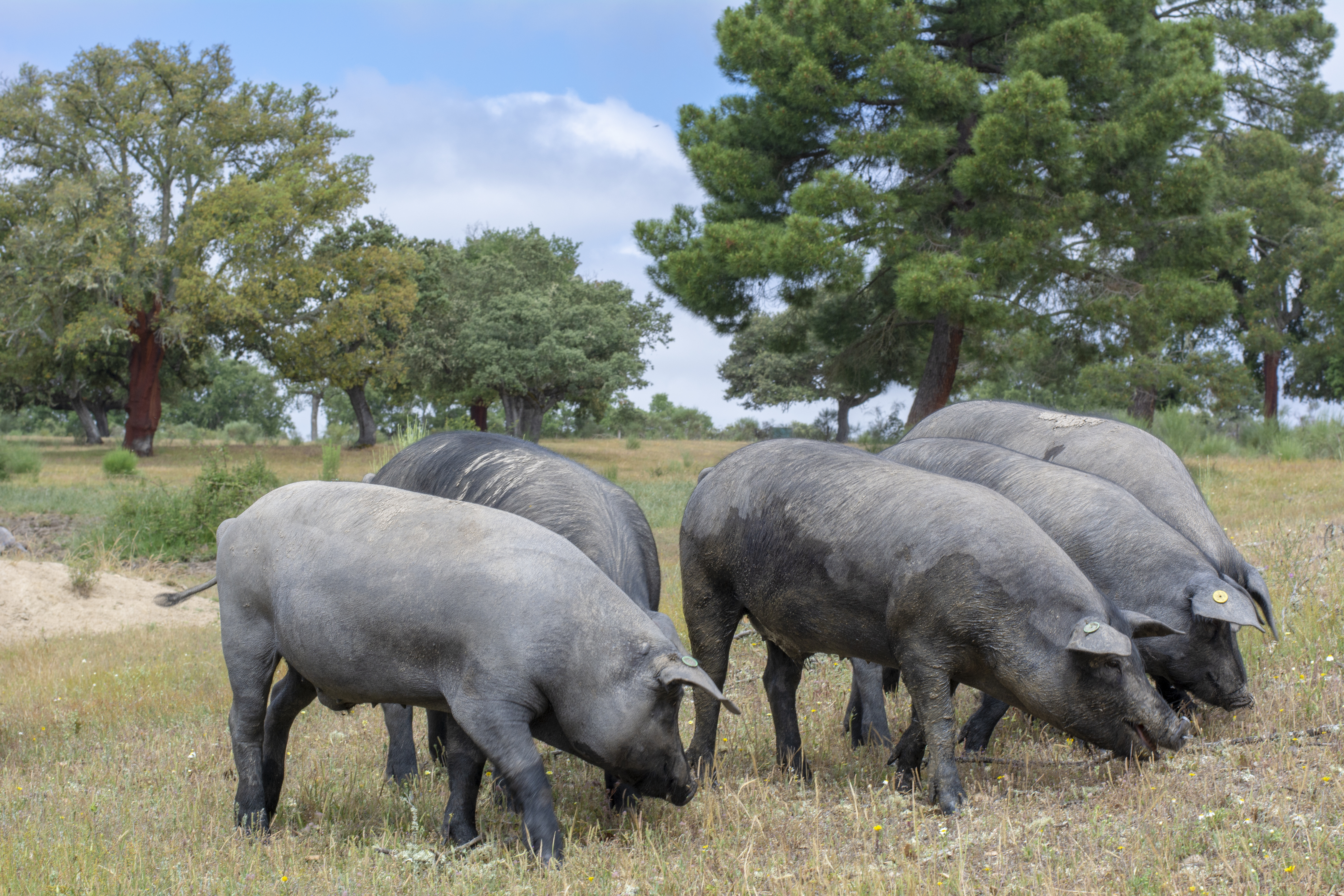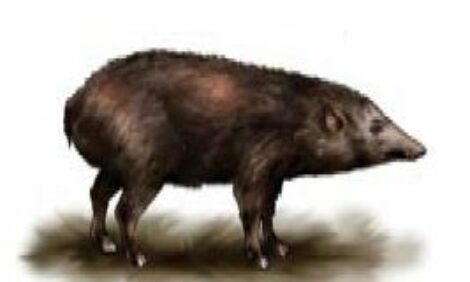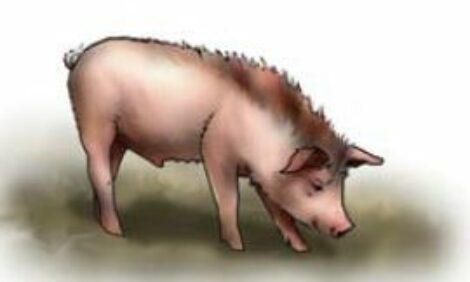



Iberian
Iberian Pigs have long floppy ears, long snouts, and long legs. They are covered in dark hair. They have black hooves. They are basically a semi-wild pig, closely related to wild boars, and are found mostly in the west of Spain. One of an Iberian pig's four grandparents may be either a Duroc or Jersey pig, and it will still be classed as an Iberian pig.

The most commonly accepted theory is that the first pigs were brought to the Iberian Peninsula by the Phoenicians from the Eastern Mediterranean coast, where they interbred with wild boars. This cross gave rise to the ancestors of what are today Iberian pigs. The production of Iberian pig is deeply rooted to the Mediterranean ecosystem; it is a rare example in the world swine production where the pig contributes so decisively to the preservation of the ecosystem.
The numbers of the Iberian breed have been drastically reduced since 1960 due to several factors, such as the outbreak of African swine fever, and the lowered value of animal fats. In the past few years, however, the production of pigs of the Iberian type has increased to satisfy a renewed demand for top quality meat and cured products.
This traditional breed exhibits a good appetite and propensity to obesity, including a great capacity to accumulate intramuscular and epidermal fat. The high intramuscular fat is what produces the typical marbling; this, together with traditional feeding based on acorns, is what makes its ham taste so special. The meat products from Iberian pigs are quite distinct from other products obtained from pigs raised under intensive conditions on industrial farms, and are a good example of high quality, and highly prized, product.
The Iberian pig can be either red or dark in colour, with little or no hair and a lean body, thus giving rise to the nickname pata negra, or "black hoof". In traditional management, animals ranged freely in sparse oak forest ('dehesa'), they are constantly moving around and therefore burn more calories than confined pigs. At least a hectare of healthy dehesa is needed to raise a single pig, and true dehesa is a richly diverse habitat with four different types of oak that are crucial in the production of prime-quality ham. The bulk of the acorn harvest comes from the holm oak (from November to February), but the season would be too short without the earlier harvests of Spanish oak and gall oak, and the late cork oak season, which stretches the acorn-production period from September almost to April. Meat from the pigs is graded according to how they were fed:
In descending order, the grades of meat from Iberian pigs are:
- Jamón Ibérico de bellota (bellota meaning acorn)
- de recebo (recebo meaning gravel, implying barnyard)
- de cebo or pienso (cebo and pienso meaning fodder.)
The de Bellota grade is from pigs fed commercial feed until they reach 200 pounds (90 kg, at the age of 14 to 15 months), then nothing but pasture grass and acorns until they reach their slaughter weight of 350 to 420 pounds (160 to 190 kg.)
The de recebo grade is from pigs fed commercial feed until they reach 200 pounds (90 kg), then a mixture of commercial feed (no more than 1/3 commercial feed), pasture grass and acorns until they reach their slaughter weight of 350 to 420 pounds (160 to 190 kg.) ‘Gravel’ implies time in a barnyard.
The "de campo" or "de cebo" grade pigs are fed only commercial feed.








